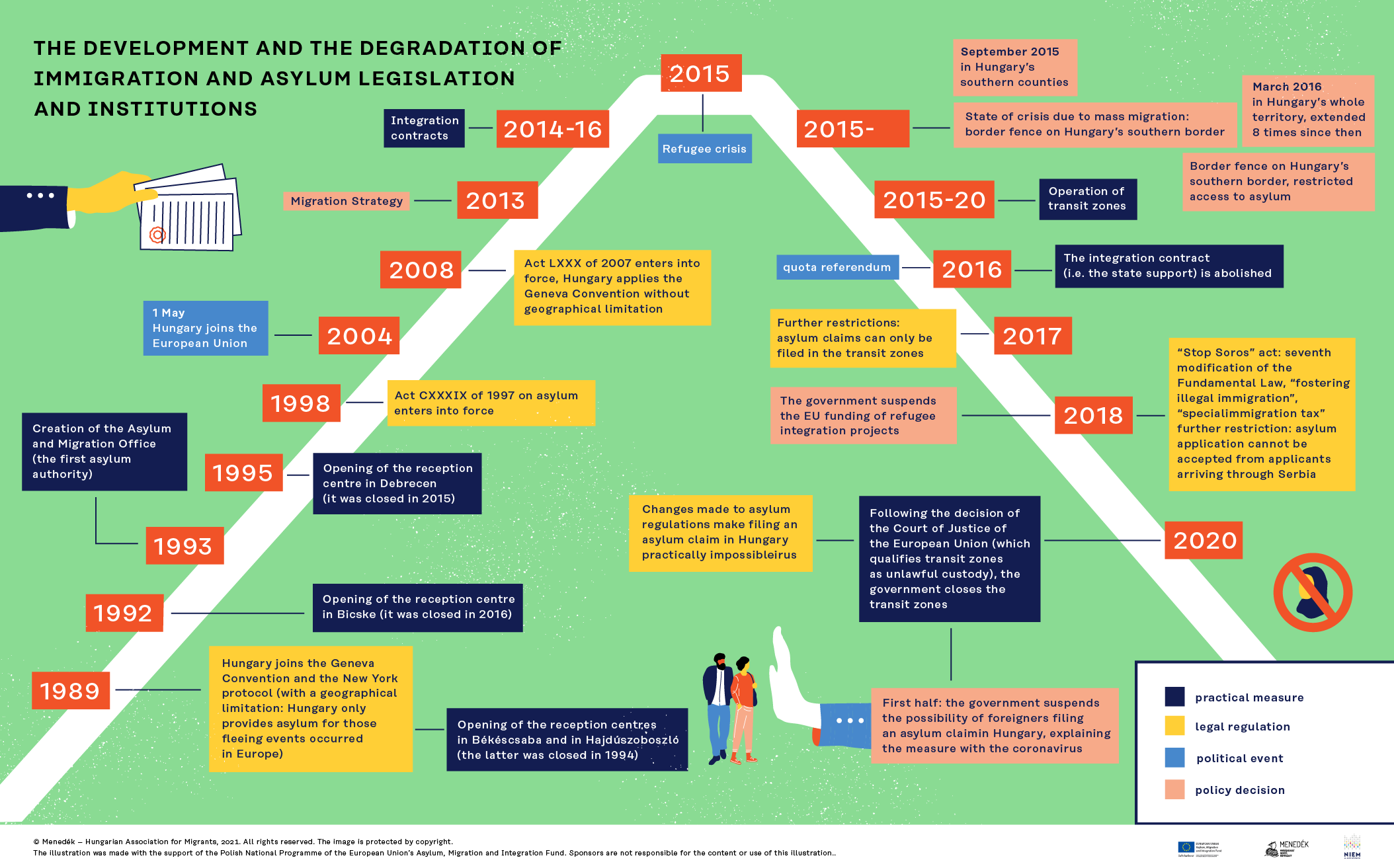
In Hungary, from the transition to democracy to the 2015 refugee crisis, a legal and institutional system was built slowly but steadily, which facilitated the reception and integration of refugees, and which was increasingly in line with European standards. Between 2015 and 2020, this system was dismantled and hollowed out by the government.
After the transition, Hungary made international asylum law (the Geneva Convention and the New York Protocol) part of its own legal order. An asylum authority was set up and reception centers for refugees were opened. With the accession to the EU, the regulation of migration and asylum were brought into line with EU law, and EU funds were opened to organizations working in this field. The government developed a Migration Strategy, and recognized refugees received support under the integration agreement to facilitate their social integration.
In 2015, the government ordered a crisis caused by mass immigration, which has since been extended every six months. A border fence was built on the southern borders of Hungary, and the so-called transit zones were set up, where asylum seekers had to apply for asylum. Public opinion was tuned against refugees by billboard campaigns, referendums, and the so-called Stop Soros Act. The integration agreement was abolished, and EU funds were cut off from NGOs. In 2020, following a ruling by the European Court of Justice, the government closed the transit zones and made it virtually impossible to apply for asylum in Hungary.
